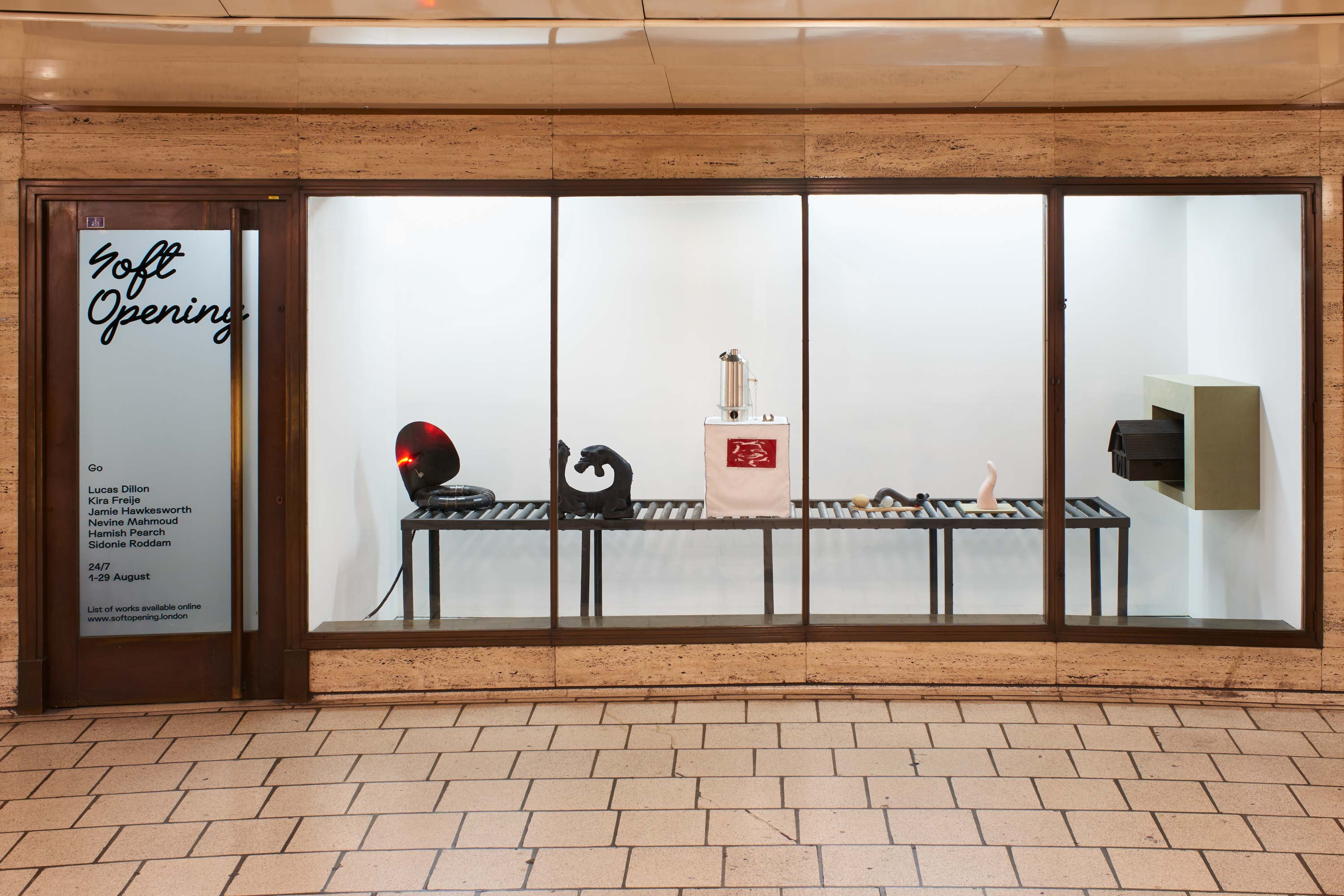What would happen if London was no longer inhabited by intelligent life? All things have seasons, periods of peaking production followed by long sorrowful slumps. Imagine if all that’s left is an architectural construction site, scattered with giant artificial rocks of asphalt, concrete and glass. A city that empties itself out from within: empty arcades and a deserted civic centre. The greatest of humanity’s collective projects sighs its last gasp. Good behaviour offers no salvation, only a temporary reprieve. And considering that life after humans won’t understand geological layering, the concept of the Anthropocene dies with us. What will objects do when we’re gone?
Go assembles a group of artists whose work investigates a reshaping of the world through a reconfiguration of materials, ideas and forms. Five objects are presented on cardboard rollers with portals at either end, suggesting a corridor that leads endlessly elsewhere. They better get there quick, before the cardboard buckles and the portals slam shut. In each sculpture, the principle of “truth to materials” reigns supreme: metal, found flotsam and jetsam, ceramic, stone or wood stand by their material idiosyncrasies. Whether in the delicate positioning of Hawkesworth’s balanced found objects, Freije’s cut and welded metalwork, or in Mahmoud’s carved and smoothly polished marble, each object represents human labour made material. Taking into account the cyclical subterranean architecture of Piccadilly Circus, Go considers what it means to be a unique but lumpen thing travelling through a conduit at speed.

